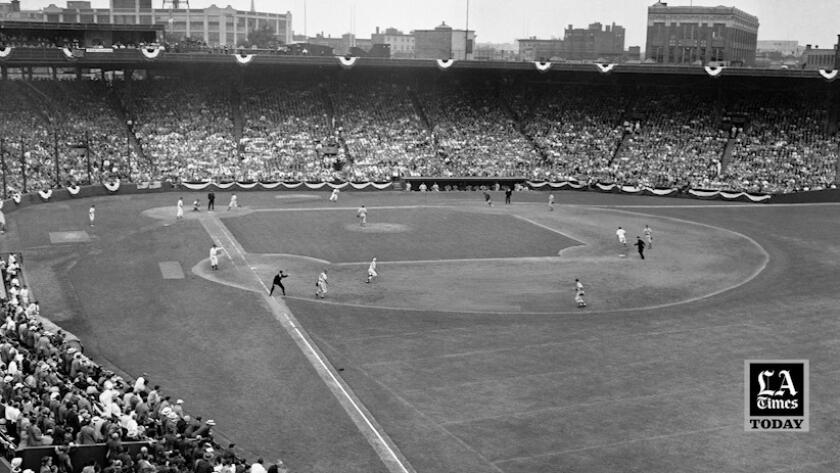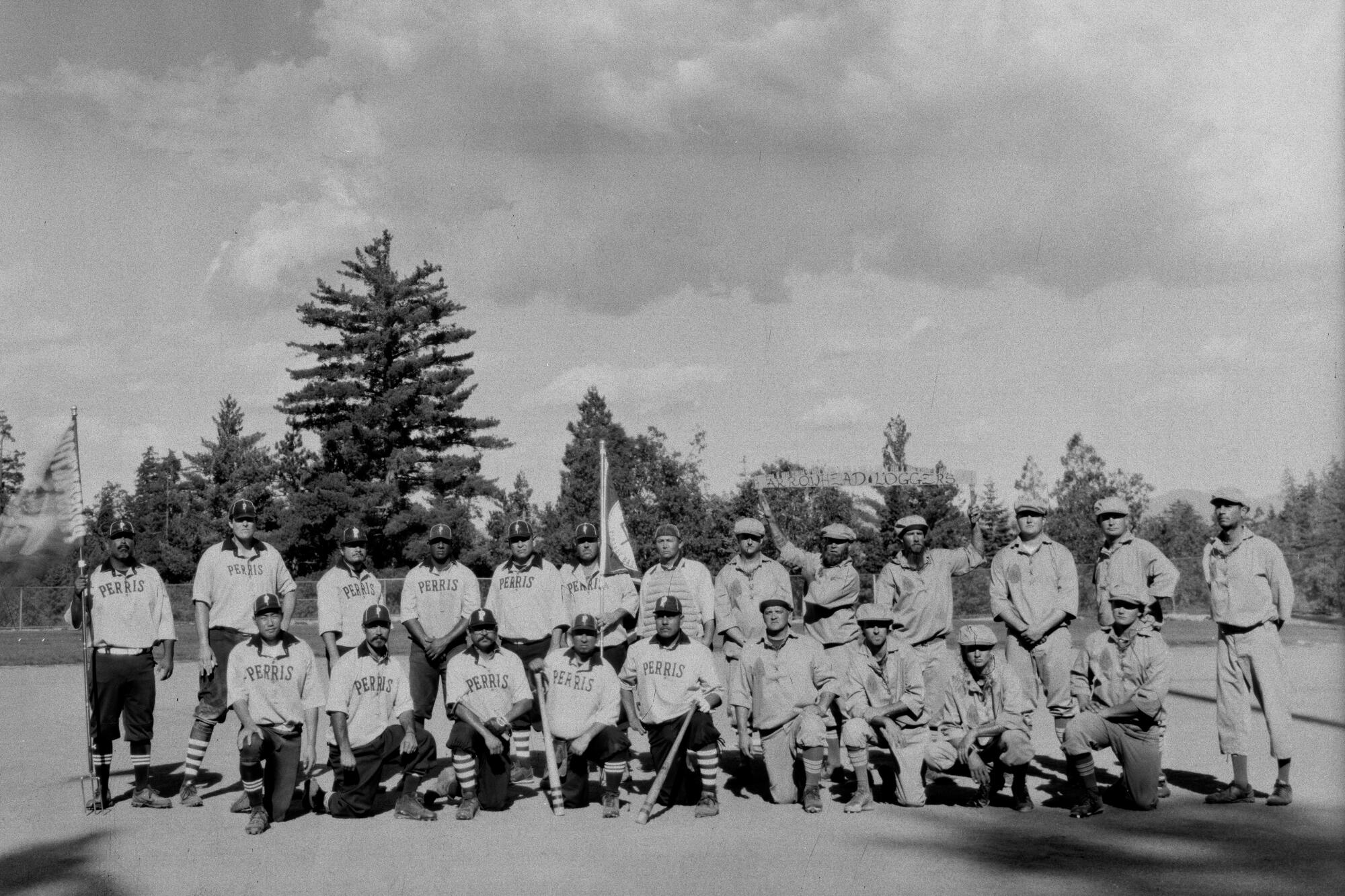
- Share via
TWIN PEAKS, Calif. — At a glance, it looks like baseball, but a closer look — and a listen —reveals something decidedly different.
Umpire Darren “Sugar” McCanne draws two puffs from a cigar and barks, “Two hands down!” as the striker, Jason “Batman” Risnes, steps to the line next to home plate.
This is baseball? After a fashion — a very old fashion — yes.
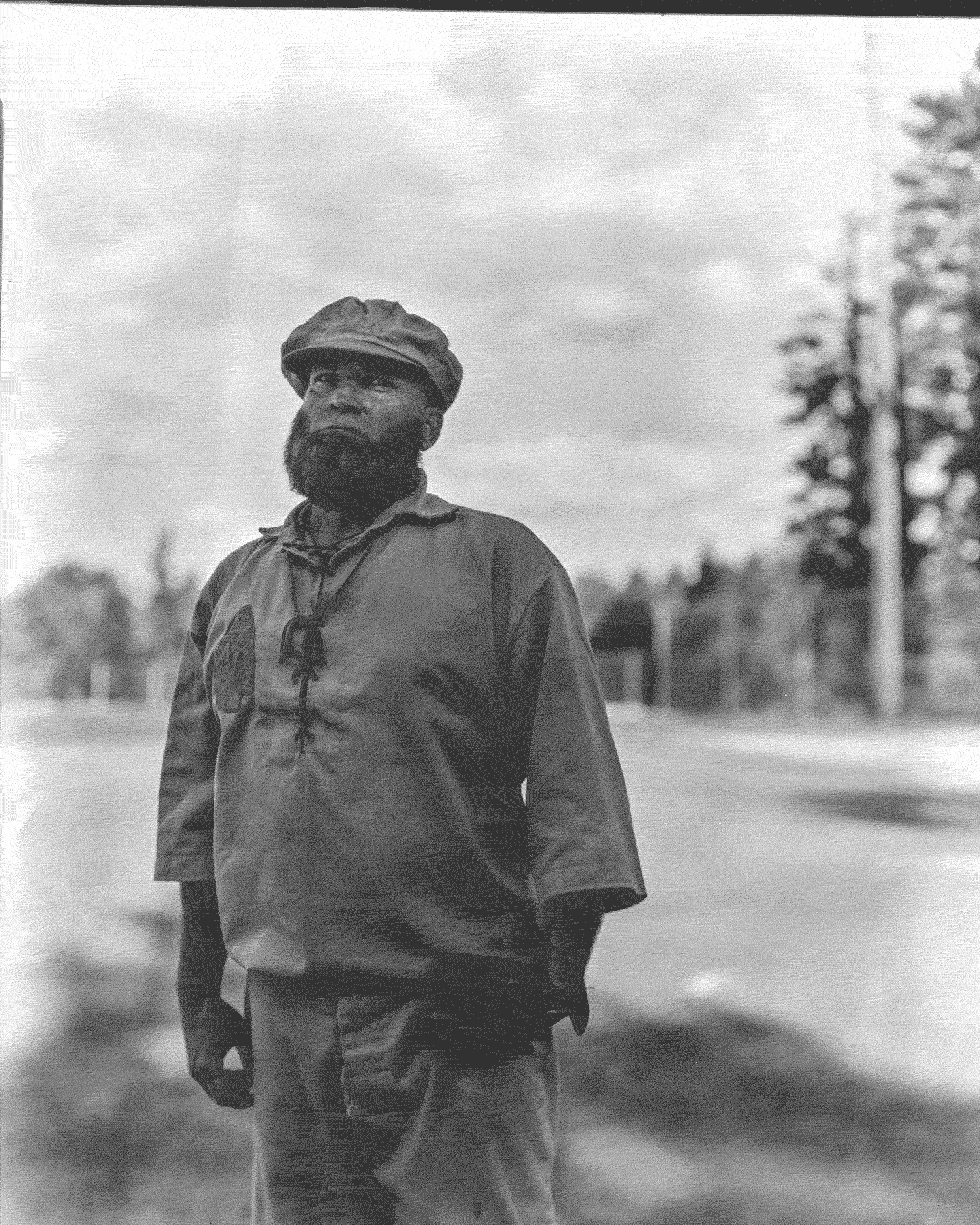
It’s extra innings and the Arrowhead Loggers are down an ace to the Perris Prospectors at the Southern California Vintage Baseball League semi-final. These guys play the game using a rulebook from the 1800s, which explains, among other things, their unexpected vocabulary.
“Hands” are outs and a “striker” a batter. Back in the day, strikers could declare whether the strike zone was below the waist (low), above it (high) or not declare one at all. Risnes makes his choice and calls out to the umpire, “Low, sir.”
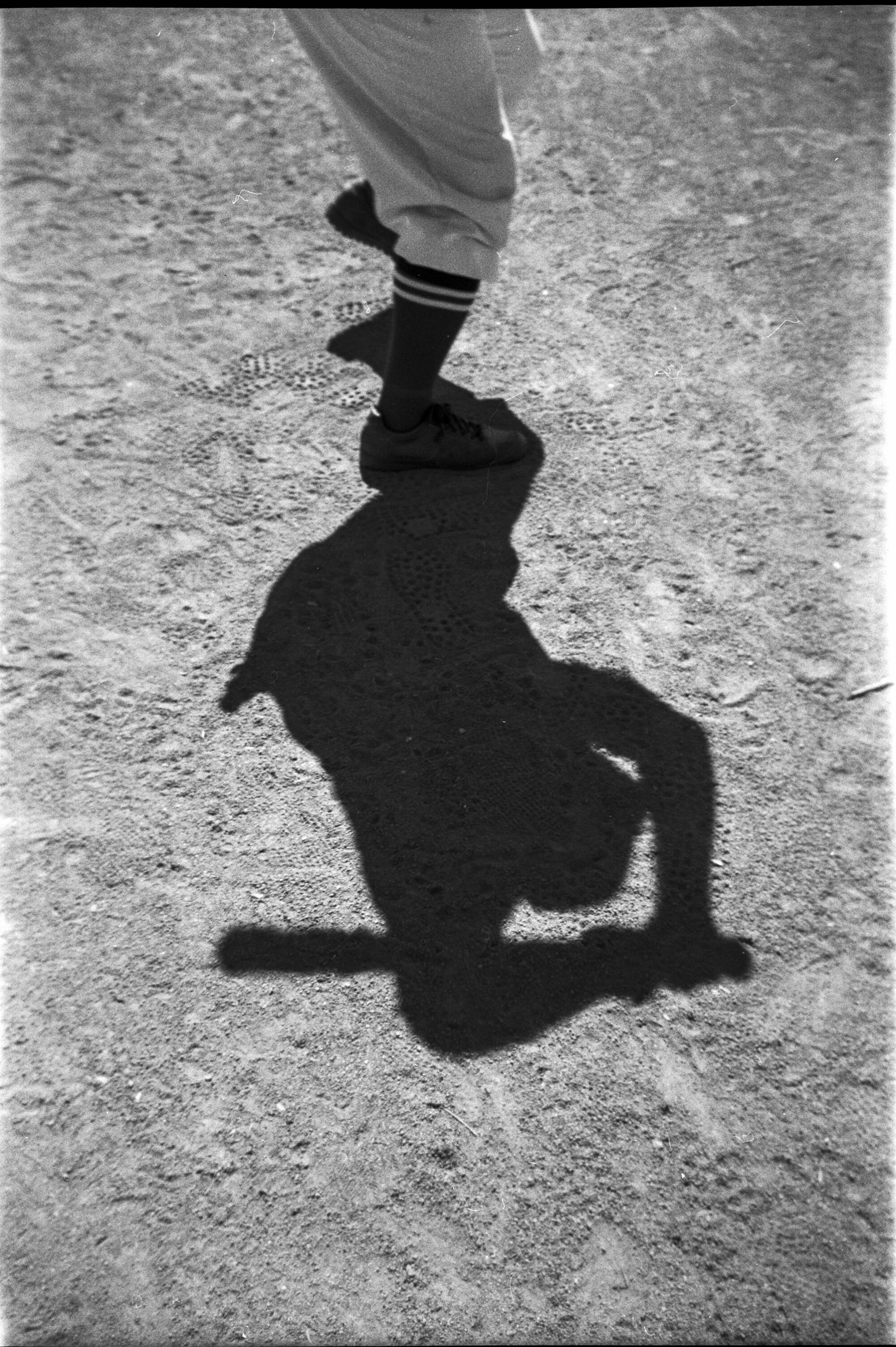
“Low, low, here we go!” McCanne says.
There’s no mound in this version of the game, just a rectangle marked off with chalk 50, not 60, feet from home plate. Perris hurler Joe “Scraps” Rosalez — everyone is required to have a nickname — slings a hard fastball, and Risnes connects for a high fly.
A mountain wind alters the ball’s path to the right fielder. Wearing a mitt the size of a gardening glove, he muffs it. Glenn “Glenergy” Cummins runs from third base to tie the score. Not far behind and charging hard from second base is Ricardo “Sarge” Noriega, diving for home just ahead of the tag of catcher Kris “Samurai” Hiraoka.
As a thick cloud of dirt settles, it’s the Loggers 14, Prospectors 13. Game over. Noriega dusts himself off, then helps Hiraoka to his feet for a polite handshake.
“It definitely connects you to the past,” says the Loggers’ captain, Dustin “Sandlot” Warner.
Seeking that connection to the past motivated me not just to photograph these hardened athletes, but to do so using a camera built when Theodore Roosevelt was president. Like the Loggers, Prospectors and Trolleymen — the team names are all vintage — I found the experience to be transformative. Surprisingly, so. Not only was I reconnecting with the art of analog photography, but baseball, too.
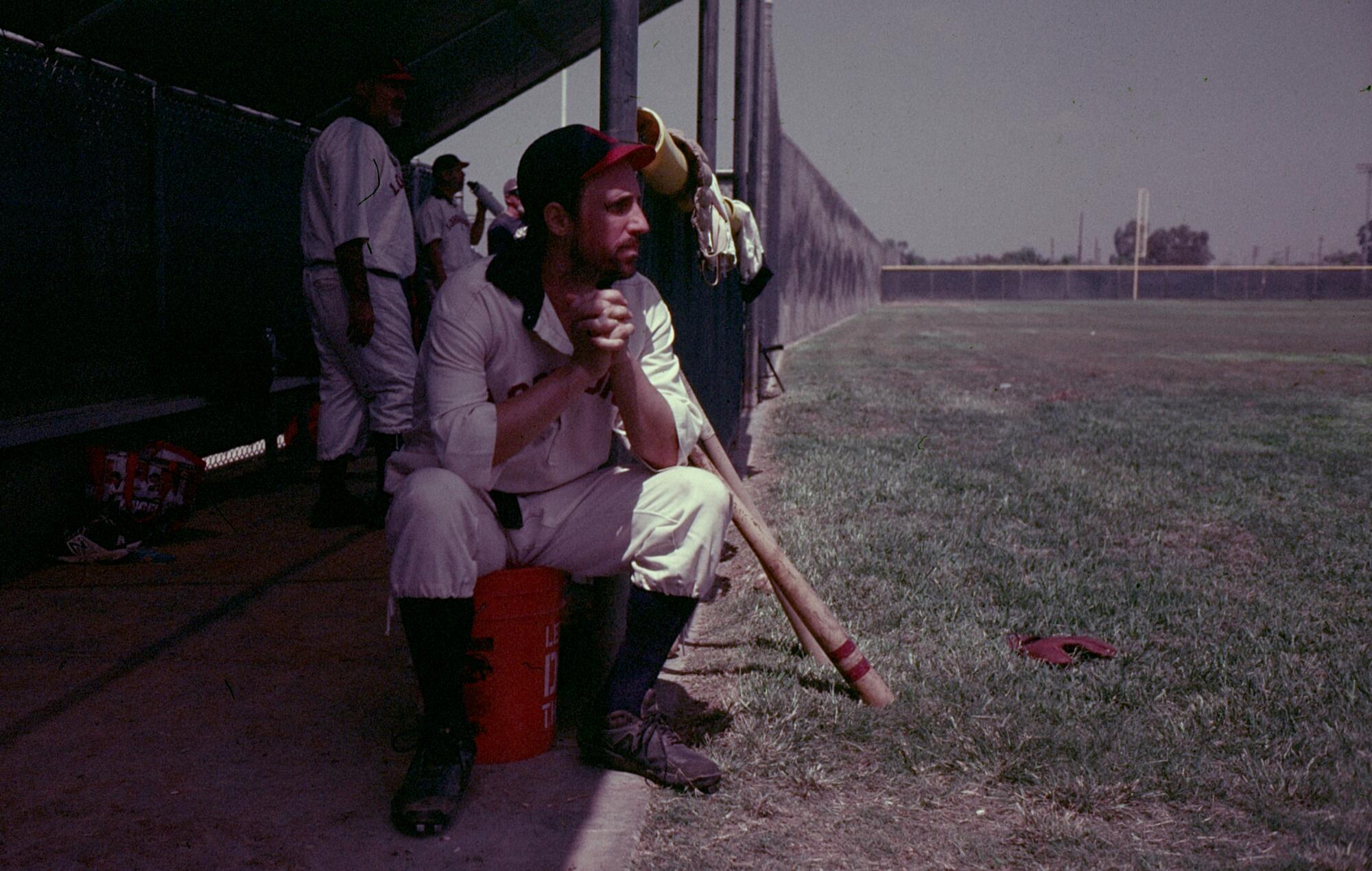
Ruled by the 1886 Spalding Baseball Guide, the eight-team league includes teams from Riverside, San Bernardino, Los Angeles and Orange counties. Players, ranging in age from 18 to 60, wear uniforms styled from the late 19th century and use equipment (bats, gloves and balls) modeled from that era.
“It’s playing baseball the way it should be played,” said Hiraoka, who aspired to play pro baseball but quit during his sophomore year at UC Riverside to pursue a career as a lawyer.
“It was a gentlemen’s game,” said Victor “the Designer” Gomez. “We try to keep it traditional.” Using old terms for those in the crowd, he adds, “We keep it entertaining for the cranks, bugs, rooters, the fanatics.”
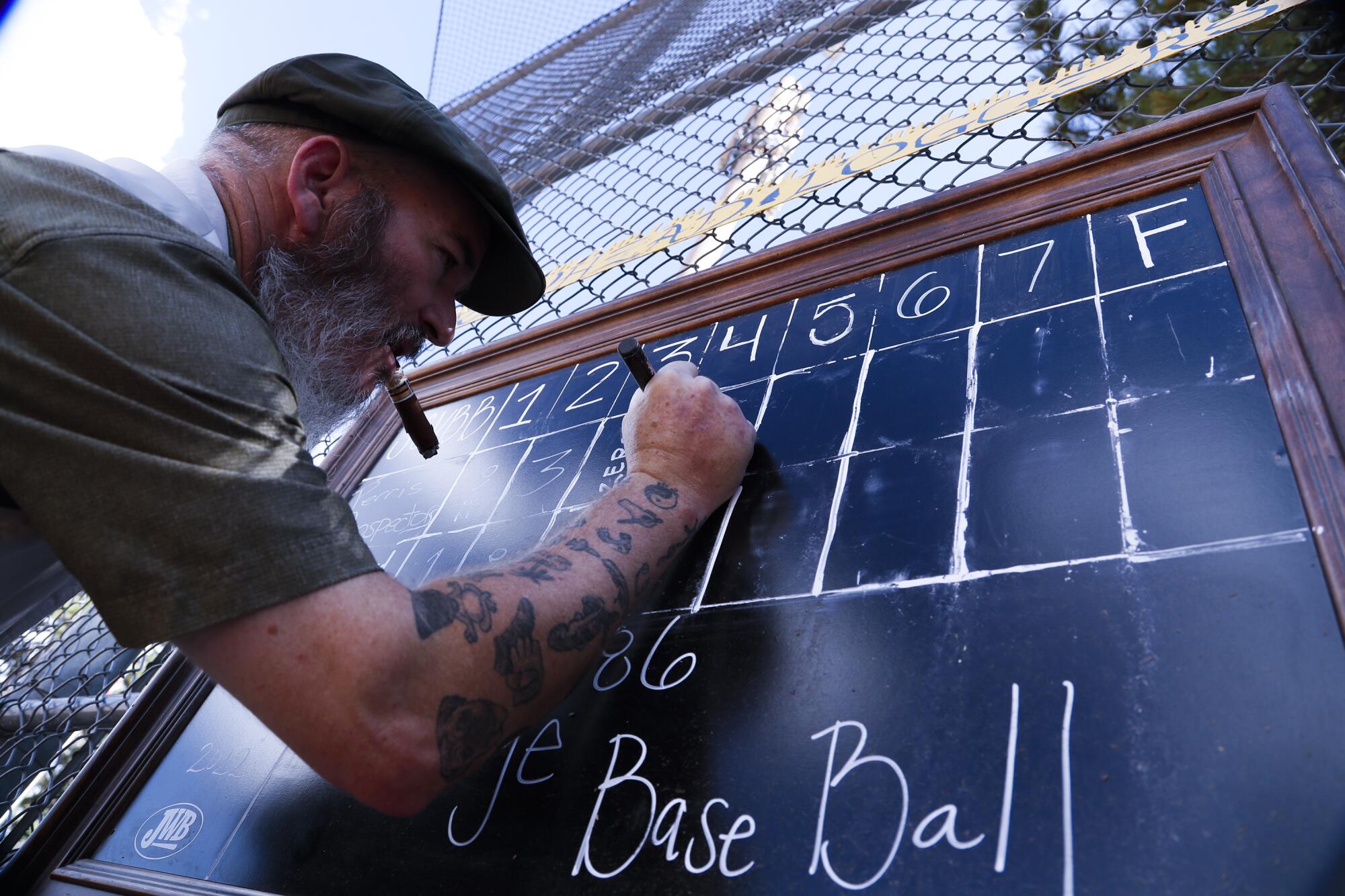
Gomez, who plays for the Riverside Smudge Pots, often arrives hours before game time to decorate the field located at the California School for the Deaf, Riverside. Gomez hangs bunting, banners and flags to further create the illusion of another time. Even sounds from the stands are antique, with someone making noise with a kazoo-like contraption operated by a hand crank.
Gomez intends to not only honor the game, but also his community. “The Inland Empire has such a rich history when it comes to baseball,” he said. “We don’t do this for money, we do this for the love of the game. We’re just guys who really love to play.”
Despite its gentlemanly demeanor, it’s a hard game. Hurlers pitch fast. Batters don’t wear protective helmets and aren’t awarded first base if they are plunked. A foul tip caught by the catcher, who doesn’t wear shin guards, is an out.
A striker is expected to stay mostly still, and if his hands so much as twitch during a pitch, it’s a strike. And something else: seven balls is a walk.
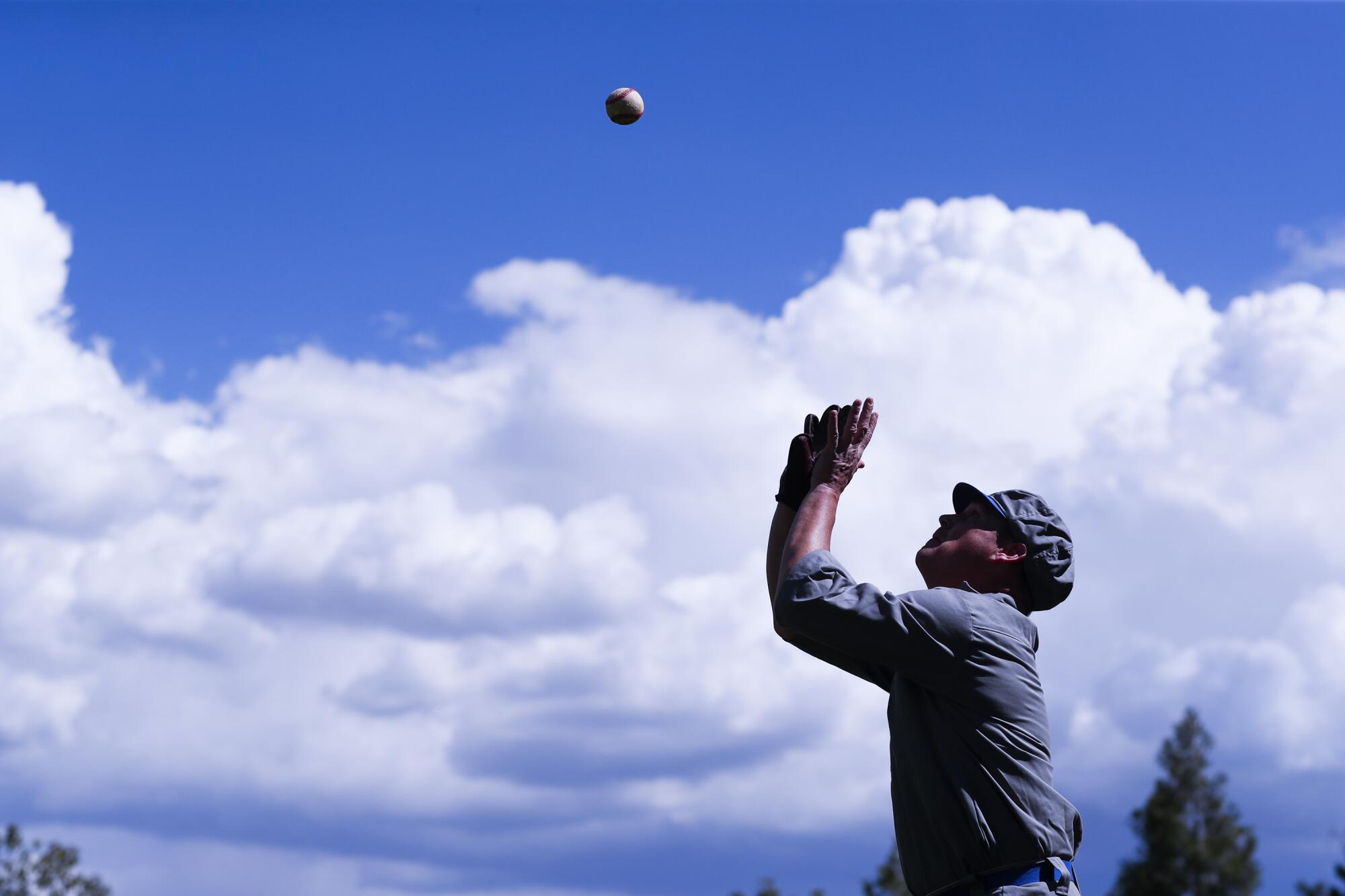

“There is not an easy play,” Warner says. “There’s no routine ground ball, no routine fly ball.”
The most obvious difference from modern baseball is the fielder’s mitt, essentially two pieces of leather stitched together to fit loosely on the player’s hand.
“I betcha there were a lot of broken fingers back in the day,” Gomez says. “I don’t know how they did it.”
“There’s a reason why we play every other week,” said Zack “Cap” Grelling of the Lordsburg Trolleymen, who has suffered broken fingers. “Most guys need the extra week to heal up.”
Small mitts, top hats and formal conveyances sometimes lead players to experience transformative moments on the field. “When your team is out on the field, you’re playing the game that you love in a very different way and everyone is in sync — that’s when I feel transported,” Grelling says.
In a way, so did I. The players let me shag a few balls in right field and I could appreciate the odd mechanics of using an old-style glove. I thought I had a fly ball lined up for a catch, but the ball ticked off the end of my fingers. You essentially had to get used to catching without having a glove at all.
In this game, there is no easy play, there’s no routine ground ball, no routine fly ball. This goes for vintage photography too.
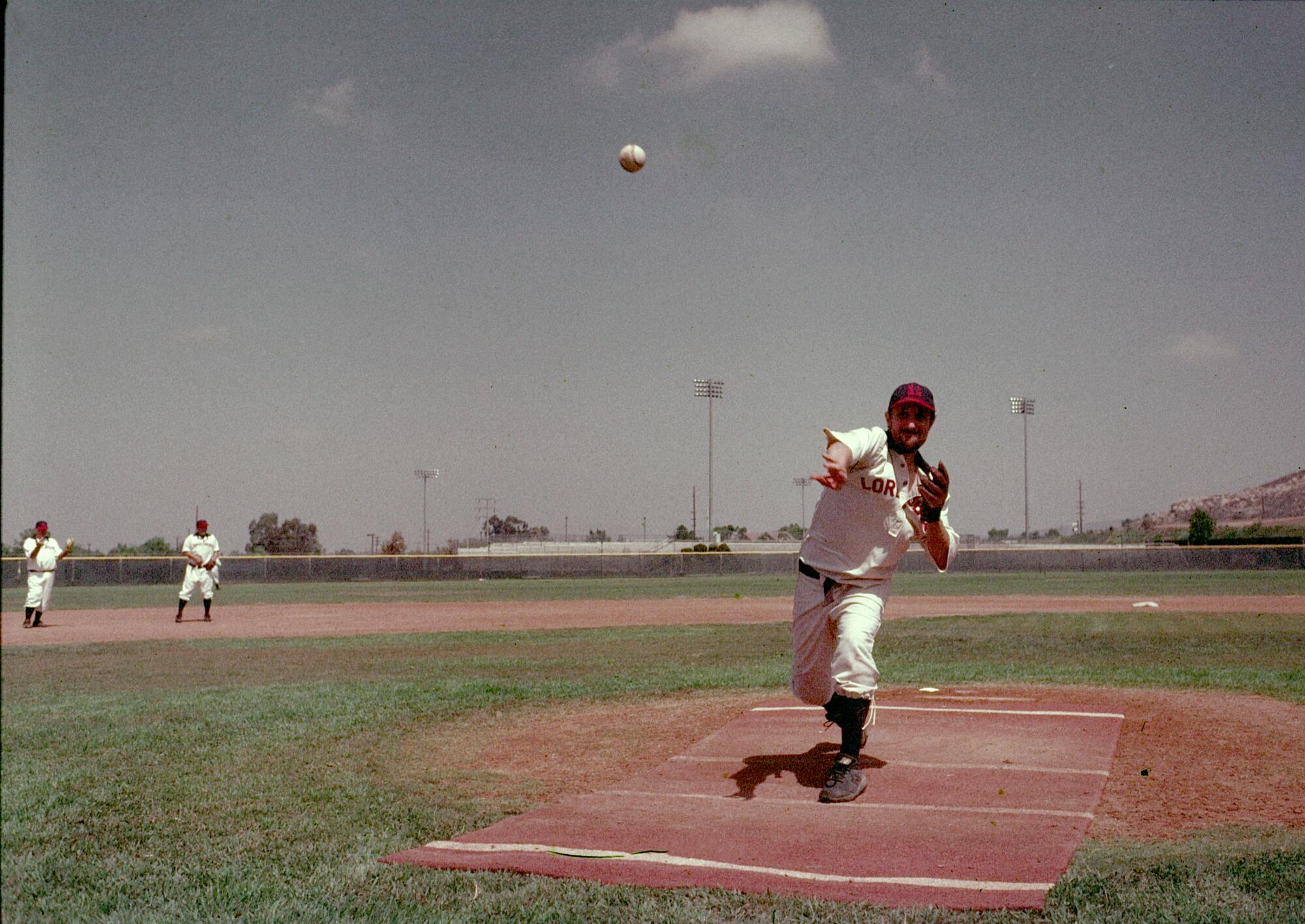
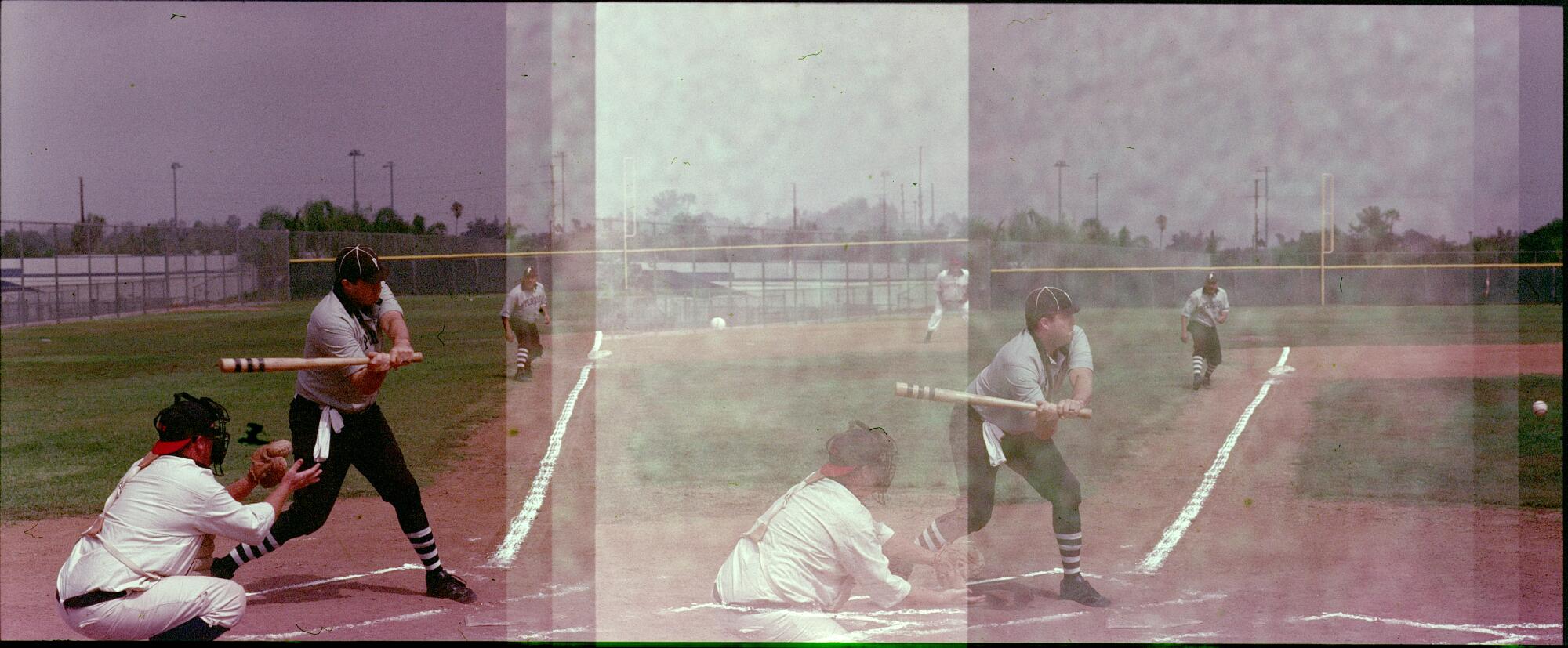
Thanks to Times photo editor Kelvin Kuo, who suggested I use a period camera to tell the story, I was tasked with learning how to make images with an 8-by-10 camera built near the turn of the 20th century. It’s been at least 20 years since I’ve operated a film camera, and I’ve only once before used a bellowed camera.
Along with the 8-by-10, I used a 1930s-era Bulls-Eye Brownie with tri-x film, a 1980s-era Leica M6 with Ektachrome film 20 years past its expiration date and a 2000s-era Mamiya 7 medium-format camera with Ektachrome E100 film.
After two decades of using digital cameras, my brain had become rewired to approach subjects and scenes with a minimum of thought regarding capturing moments and aesthetics of each scene. In a nano-second I could capture dozens of images.
The old process of manually focusing, setting the exposure, pushing the shutter button and winding the film forced me to use muscles that have lain dormant for years. The art of patience, anticipation and composition excited dormant brain synapses.
Just as the men were not merely cos-playing old-timey baseball, this was happening, right now, in real time. They still had to hit a 60-mph fastball thrown from 50 feet away. I still had to anticipate, compose, focus and shoot. They still had to catch line drives with tiny mitts and run 90 feet from base to base. I had to trust that the film recorded my intentions, something I couldn’t confirm until it is developed a few days later.
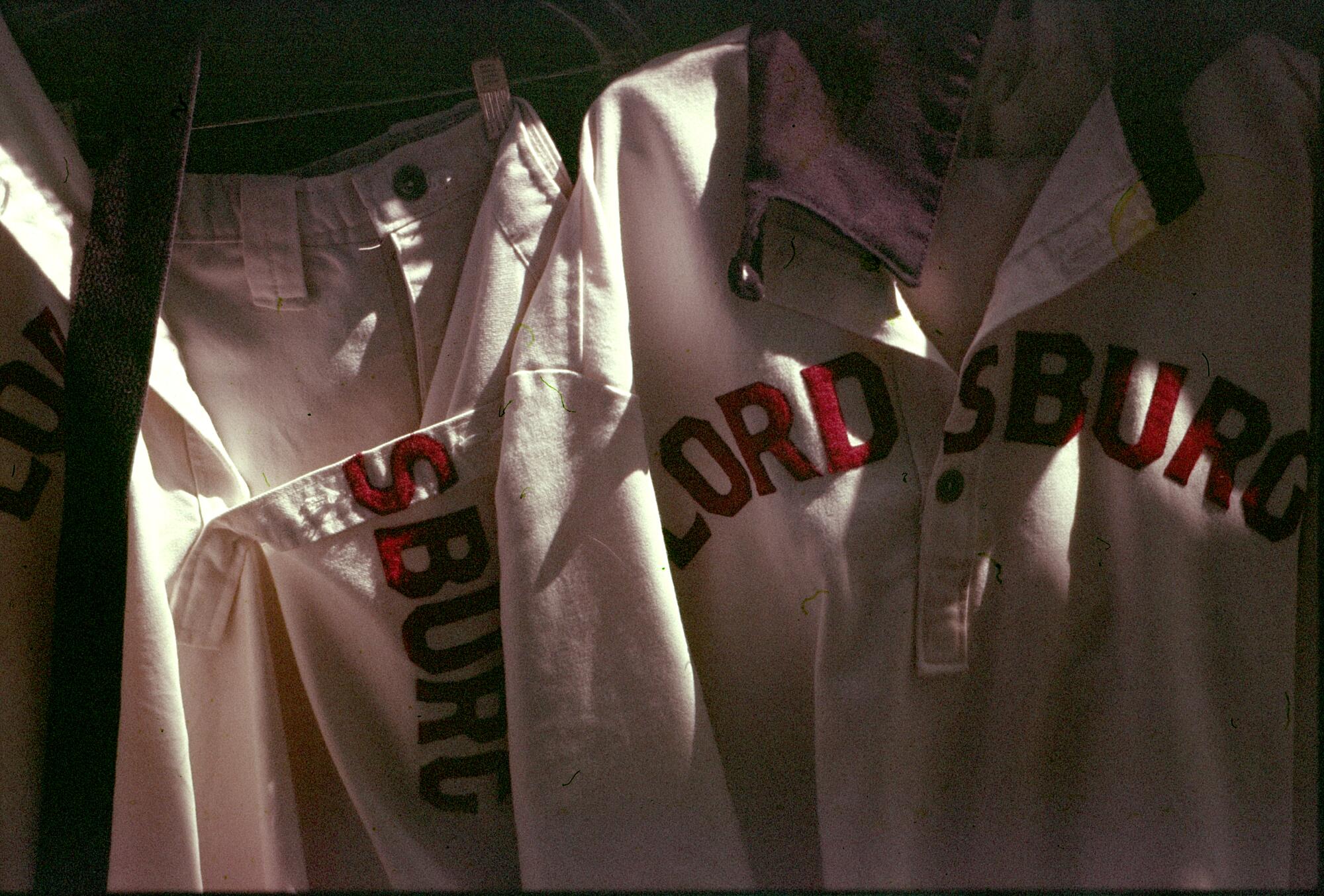
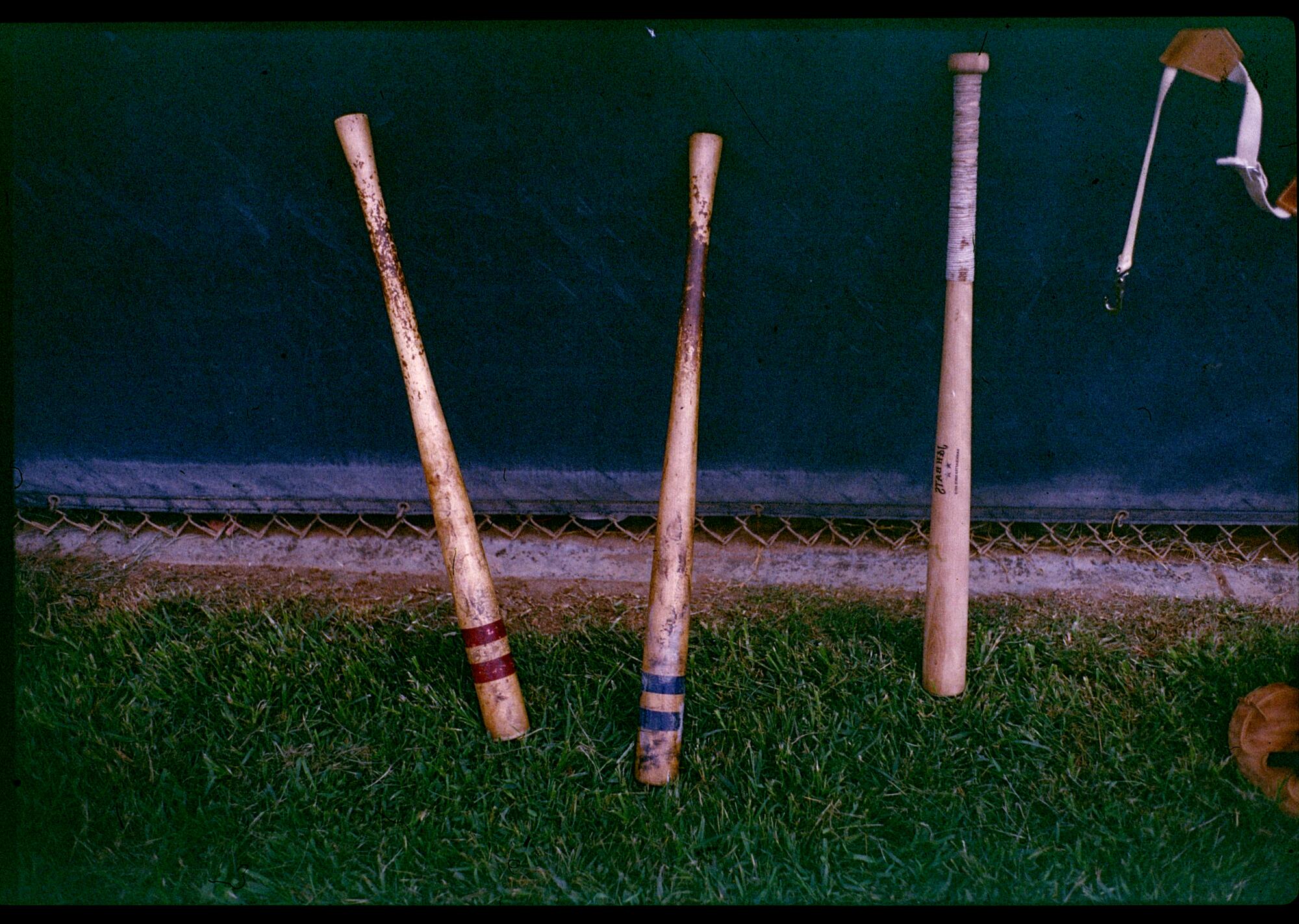
After the game came the team photos. With the help of Dr. Jeff Tran, the camera’s owner, we roll the tripod and 8-by-10 camera (a 1909 Gundlach Wizard View) onto the dirt infield, focusing on the players using a flipped and reversed image on a ground piece of glass. To see everything clearly, I huddle under a black sheet.
In a nod to modernity, we use film, not glass plates, with the 8-by-10. Focused and ready, I set the shutter (270/360 Kowa Graphic f9 lens) and drop in a film holder loaded on two sides with Fuji hrt X-ray film, rated at 3 iso. I pull the dark slide, alert the subjects to hold real still and trip the shutter for a half-second exposure. Like baseball, hours of preparation culminate in a split second of action.
Photographing this way brought to life those cloudy sepia images of stiffly posed, cocksure men. Bathed in the day’s mountain sun buried under the dark sheet, I realized I was performing the same task, more than a century removed. Those faraway men became real. The sepia fog turned to bright colors and deep shadows in the late-afternoon sun. They were right in front of me, alive.
Also dormant was my love for the game of baseball. I was reminded of seeing my first major league game in 1969, when 7-year-old me got a free California Angels Bobby Knoop souvenir bat and looked on in awe as Sandy Alomar ran like the wind on a grounder to shortstop.
I played until I was 15 — first base, catcher, pitcher and right field — but I wasn’t very good. Other than a few Little League homers (that I vividly remember), I recall more the friends and teammates from season to season.
Baseball has always marked time for me. The Jackson 5’s “Never Can Say Goodbye,” played on my sister’s ’64 Impala radio as we drove to Camp Pendleton Little League fields in 1971.
Years later and right out of college, I was shooting alongside the country’s most accomplished sports photographers as Steve Garvey cracked a game-winning homer at Jack Murphy Stadium in 1984. I will never forget making the rookie mistake of watching the ball fly over the right-field wall instead of focusing my camera on Garvey. I recovered quickly and managed to capture some of the moment on film, but the hard lesson remains with me 38 years later.
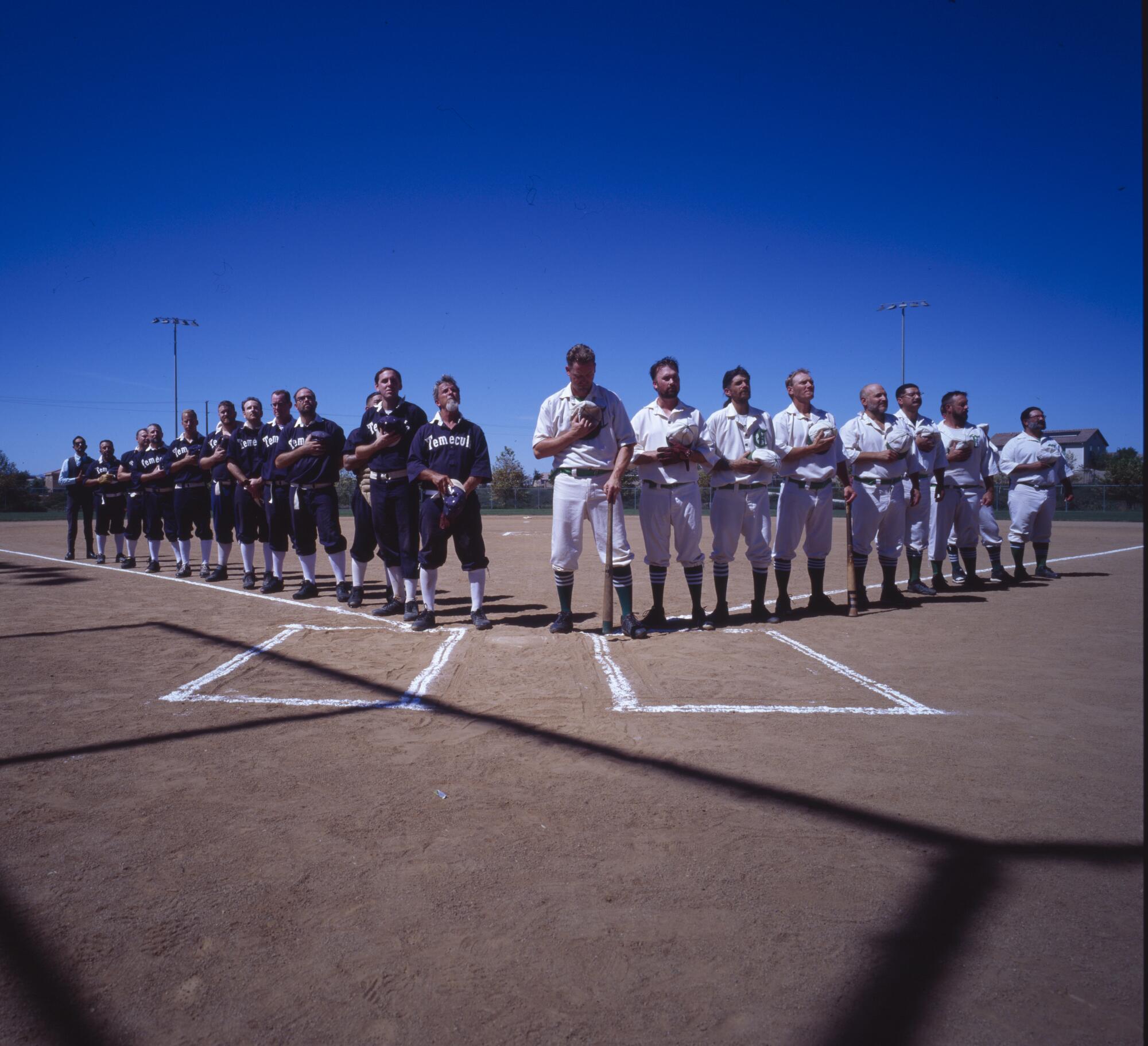
My time with the Prospectors and Loggers in Twin Peaks provided different kinds of lessons. Slow down, be deliberate. And appreciate the past.
- Share via
Watch L.A. Times Today at 7 p.m. on Spectrum News 1 on Channel 1 or live stream on the Spectrum News App. Palos Verdes Peninsula and Orange County viewers can watch on Cox Systems on channel 99.
More to Read
Sign up for Essential California
The most important California stories and recommendations in your inbox every morning.
You may occasionally receive promotional content from the Los Angeles Times.
